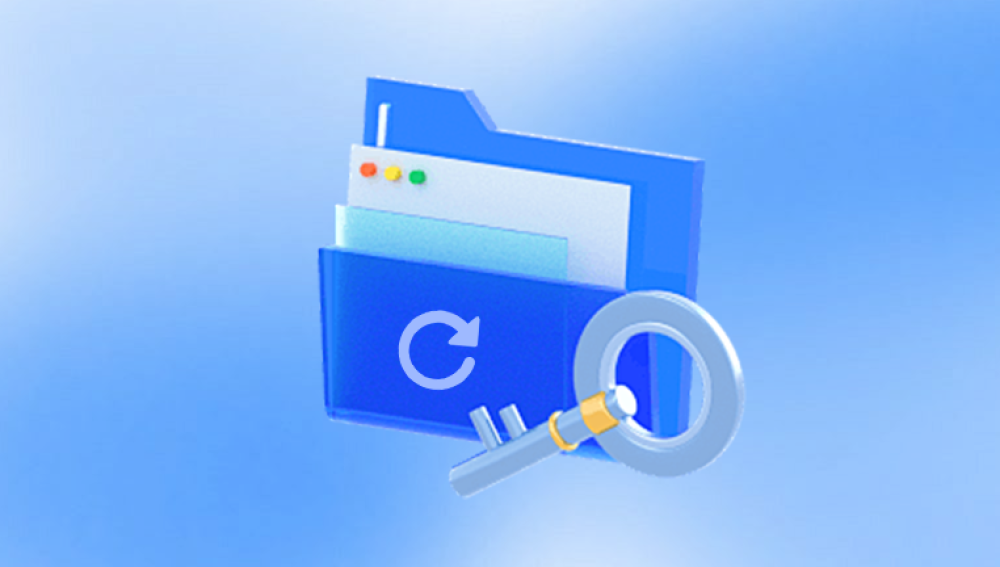Losing an important Excel file can be a stressful experience, especially if it contains critical data. Fortunately, there are several methods to restore a deleted Excel file, depending on how and where the file was stored.
1. How Files Get Deleted
Before diving into recovery methods, it’s essential to understand how files get deleted:
Accidental Deletion: You may have accidentally deleted the file or emptied the Recycle Bin/Trash.
System Crashes: A sudden system crash or power outage can cause files to become corrupted or lost.

Software Issues: Excel or your operating system may encounter errors that lead to file loss.
Cloud Sync Errors: If you’re using cloud storage, sync issues can sometimes cause files to disappear.
External Device Errors: Files stored on external drives or USB sticks can be lost due to device corruption or accidental deletion.
Understanding the cause of the deletion can help you choose the most effective recovery method.
2. Restoring from the Recycle Bin or Trash
The first and easiest step to recover a deleted Excel file is to check the Recycle Bin (Windows) or Trash (Mac).
For Windows:
Open the Recycle Bin on your desktop.
Search for your deleted Excel file by scrolling or using the search bar.
Right-click the file and select Restore.
The file will be restored to its original location.
For Mac:
Open the Trash from the Dock.
Locate your deleted Excel file.
Right-click the file and select Put Back.
The file will be restored to its original location.
Note: If you’ve emptied the Recycle Bin or Trash, this method won’t work, and you’ll need to try other recovery options.
3. Using File History (Windows)
If you’ve enabled File History on your Windows computer, you can use it to restore a previous version of your Excel file.
Steps to Restore Using File History:
Navigate to the folder where the Excel file was stored.
Right-click the folder and select Restore previous versions.
A list of available backups will appear. Select the most relevant one.
Click Restore to recover the file to its original location or Restore To to choose a different location.
Note: File History must be enabled before the file was deleted for this method to work.
4. Using Time Machine (Mac)
If you’re a Mac user and have Time Machine set up, you can use it to recover your deleted Excel file.
Steps to Restore Using Time Machine:
Connect your Time Machine backup drive to your Mac.
Open the folder where the Excel file was stored.
Click the Time Machine icon in the menu bar and select Enter Time Machine.
Use the timeline on the right to navigate to a date before the file was deleted.
Select the file and click Restore.
Note: Time Machine must be configured and running before the file was deleted.
5. Recovering from AutoSave or AutoRecover
Excel has built-in features like AutoSave and AutoRecover that can help you recover unsaved or deleted files.
Using AutoSave (Excel 365 and Excel 2019+):
Open Excel and go to File > Open.
Click Recover Unsaved Workbooks at the bottom of the screen.
Select the file you want to recover and click Open.
Using AutoRecover (Older Excel Versions):
Open Excel and go to File > Info.
Click Manage Workbook and select Recover Unsaved Workbooks.
Choose the file you want to restore and click Open.
Note: AutoSave and AutoRecover must be enabled for this method to work.
6. Restoring from Cloud Services (OneDrive, Google Drive, Dropbox)
If your Excel file was stored in a cloud service, you can often recover it from the service’s trash or version history.
For OneDrive:
Log in to your OneDrive account.
Navigate to the Recycle Bin in the left-hand menu.
Select the deleted Excel file and click Restore.
For Google Drive:
Log in to your Google Drive account.
Click Trash in the left-hand menu.
Right-click the deleted file and select Restore.
For Dropbox:
Log in to your Dropbox account.
Click Deleted files in the left-hand menu.
Select the file and click Restore.
Note: Cloud services typically retain deleted files for 30 days, but this can vary.
7. Using Data Recovery Software
Drecov Data Recovery is a user-friendly software designed to help users recover lost or deleted files from various storage devices, including hard drives, USB drives, memory cards, and more. Whether you’ve accidentally deleted files, experienced a system crash, or encountered a corrupted storage device, Drecov Data Recovery offers a reliable solution to retrieve your valuable data.
Key Features of Drecov Data Recovery
Wide Range of File Support:
Recovers documents, photos, videos, audio files, emails, and more.
Supports file formats like DOCX, XLSX, JPEG, MP4. and PDF.
Multiple Device Compatibility:
Works with internal and external hard drives, USB drives, SD cards, and other storage media.
User-Friendly Interface:
Simple and intuitive design, making it accessible for both beginners and advanced users.
Quick and Deep Scan Options:
Quick Scan for recently deleted files.
Deep Scan for more complex recovery tasks, such as formatted drives or corrupted partitions.
Preview Functionality:
Allows users to preview recoverable files before restoring them.
Safe and Secure:
Ensures data integrity during the recovery process without overwriting existing files.
8. Recovering from External Storage Devices
If your Excel file was stored on an external drive or USB stick, you can use data recovery software or check the device’s recycle bin (if available).
Steps to Recover from External Devices:
Connect the external device to your computer.
Use data recovery software to scan the device.
Follow the same steps as outlined in Section 7.
Note: If the device is corrupted, you may need to use specialized recovery tools or consult a professional.
9. Preventing Future Data Loss
To avoid losing Excel files in the future, consider these best practices:
Enable AutoSave and AutoRecover: Ensure these features are turned on in Excel.
Use Cloud Storage: Store important files in OneDrive, Google Drive, or Dropbox for automatic backups.
Regular Backups: Use File History (Windows) or Time Machine (Mac) to back up your data regularly.
External Backups: Keep copies of critical files on external drives.
Avoid Overwriting: Be cautious when saving new files to avoid overwriting existing ones.




